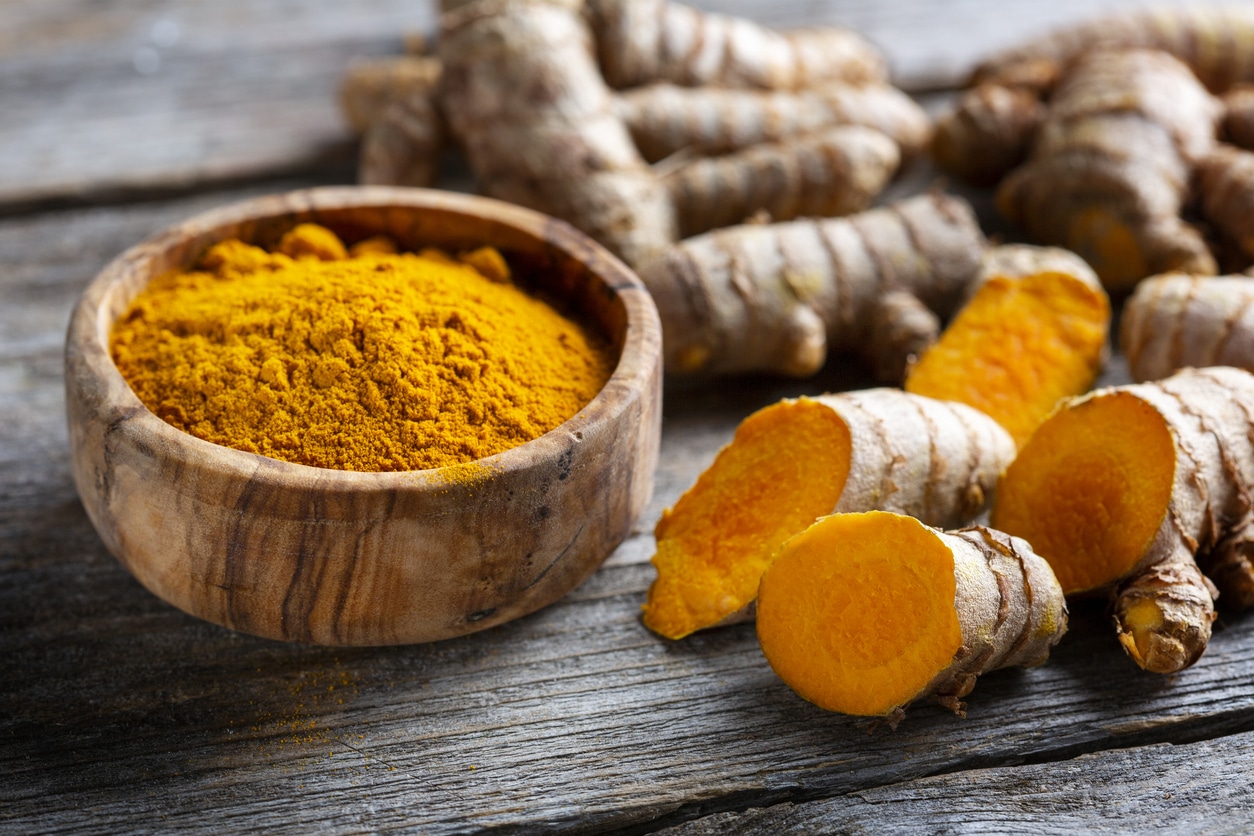From vegnews.com
If you’re thinking of cooking with turmeric, you might be thinking: what does it taste like? And does it have any benefits? We’ve got the lowdown
For many late 18th-century Western housewives and servants, Hannah Glasse’s The Art of Cookery Made Plain and Easy was a kitchen bible. The cookbook broke the mould in so many ways. It was easy to read, for one, as it was aimed at those who hadn’t been to culinary school. But it also introduced people to several recipes they had never come across before, one of which was Indian-style curry.
Of course, Glasse did not invent this recipe. It was taken from Indian recipes and has since been criticized for not being authentic (go figure). But it did help to introduce English and American cooks to one incredibly versatile, flavourful, and beautifully golden spice: turmeric.
Centuries on, turmeric has risen in popularity in the West again, going on a journey from a trendy spice to a plant-based pantry staple. And it’s no surprise really. Not only does it provide rich, deep flavour to curry dishes, but it can also be used to colour tofu scramble, vegan cheese sauces, juices, and more. Plus, it’s packed with nutrition.
Here’s everything you need to know about turmeric, from what it is, to what it tastes like, to what to cook with it next.
 Getty
Getty
What is turmeric?
Used in India for, quite literally, thousands of years, turmeric is a type of rhizome (which essentially means underground stem—ginger and bamboo are other examples of rhizomes), and comes from the South Asian curcuma longa plant. The root is knobby and bright yellow (or gold) in appearance and looks kind of like saffron, another popular Indian spice.
Now, it’s mostly sold in powdered form, although, if you desire, you can also buy fresh roots from Asian or Indian grocery stores, as well as some health or whole food stores.
What does turmeric taste like?
One reason turmeric is so popular in cooking is, arguably, its colour. Watch out, as it does stain everything—and we do mean everything. It gives curries a gorgeous bright tone and makes tofu scramble look authentically yellow and egg-like. But it also has a distinct taste, too.
As you would expect from an underground stem, turmeric is earthy, slightly bitter, and a little peppery. It’s a great team player and helps to bring out the flavour of the other spices you pair it with. That said, it goes best with other strong, warming, and earthy spices, like cumin, ginger, and cinnamon, for example. The sweetness of the latter, in particular, helps to balance out the bitterness of turmeric.
What are the benefits of turmeric?
Turmeric isn’t just tasty and colourful, it’s also good for us. Modern research suggests turmeric is a good source of antioxidants—which are molecules that help to fix damaged cells in the body—plus it’s anti-inflammatory. It’s also been used in Ayurvedic medicine, as well as traditional Chinese medicine, for centuries.
But one issue with turmeric is that its active ingredients—like curcumin, an antioxidant that is also responsible for its bright yellow colour—are not easily absorbed by the body. But combining it with black pepper (which contains an alkaloid called piperine) can help to significantly boost its bioavailability.
How do you cook with turmeric?
Turmeric’s distinct flavour means that it plays a key role in many Indian curries, including madras, korma, bhuna, and jalfrezi. And you can also use it to boost the flavour profile of soups, stews, marinades, sauces, and more. But be careful, because of its bitterness, you only need a very small amount of ground turmeric when you’re cooking—we’re talking about one teaspoon or less.
You can also swap ground for fresh turmeric if you prefer. All you need to do is grab your grater and grate the root before adding it to your dish. Again, a word of warning: expect it to stain your hands and clothes (so no cooking in white shirts!).
https://vegnews.com/vegan-health-wellness/nutrition/turmeric-inflammation-vegan-recipes
No comments:
Post a Comment